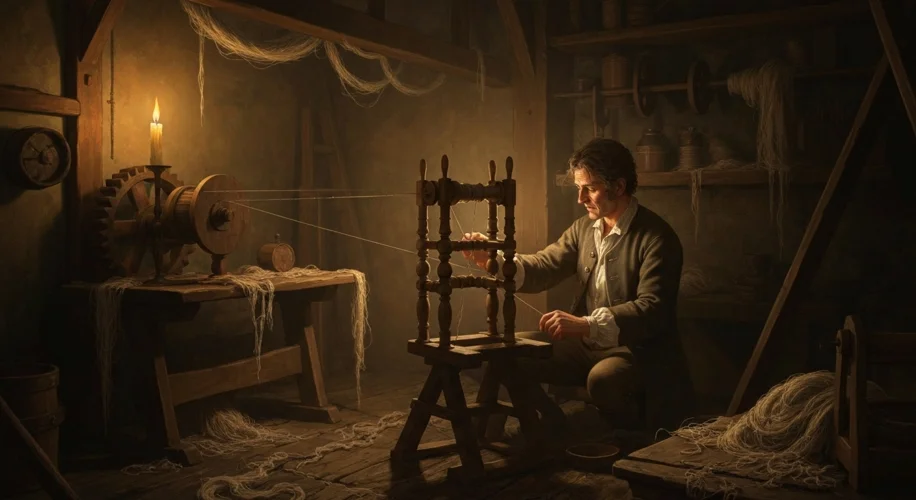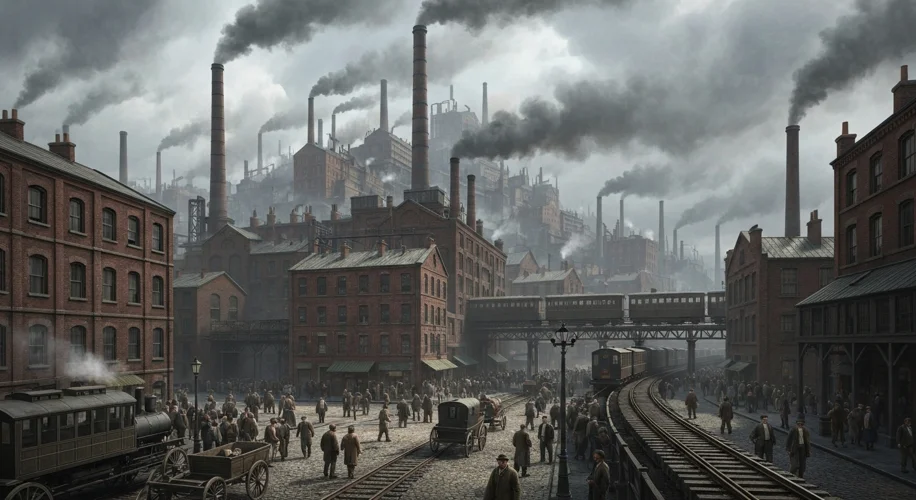The year is 1764. A quiet hum fills the air of a small workshop in Lancashire, England. James Hargreaves, a weaver by trade, hunched over his spinning wheel, frustration etched on his face. He needed to spin more wool, faster. His wife, Jenny, would often help, but one of her dropped spindles lay near the wheel. Inspiration struck. What if, instead of one spindle, he could use many, all spinning upright?
This moment of domestic struggle birthed the Spinning Jenny, a device that, in hindsight, was a pebble dropped into a vast pond, sending ripples of change across the globe. It was one of the first sparks of what would become the Industrial Revolution, a period that fundamentally reshaped human civilization.
Before this era, life was largely agrarian. Most people lived in rural villages, their days dictated by the sun and the seasons. Production was done by hand, in homes or small workshops. But the population was growing, and the demand for goods was outstripping the traditional methods. Britain, with its abundant coal and iron resources, its stable political climate, and its burgeoning empire providing raw materials and markets, was the perfect incubator for this revolution.

The innovations came thick and fast. John Kay’s Flying Shuttle had already sped up weaving in the 1730s, creating a bottleneck in spinning. Hargreaves’ Jenny, and later innovations like Richard Arkwright’s Water Frame (which produced stronger thread) and Samuel Crompton’s Mule (which combined the best of both), drastically increased the output of yarn. Suddenly, one person could produce vastly more thread than ever before.
But where to put these machines? The Water Frame, in particular, needed water power. This led to the rise of the factory. Instead of scattered cottages, factories sprang up along rivers, powered by the rushing water. These were noisy, often dangerous places, filled with the clatter of machinery and the sweat of laborers. They represented a new way of working: centralized, regimented, and driven by machines.
Then came steam. James Watt’s improvements to the steam engine in the 1760s and 70s were a game-changer. No longer tied to rivers, factories could be built anywhere. Steam power could drive multiple machines, and more importantly, it could power new forms of transport: the steamship and the locomotive.
The “Rocket,” George Stephenson’s pioneering steam locomotive, heralded the age of the railway in 1829. Suddenly, goods and people could travel farther, faster, and cheaper than ever imagined. This interconnectedness fueled trade, allowed for the movement of raw materials to factories, and transported finished goods to markets across the nation and beyond. It also facilitated a new kind of migration.
As factories drew people in search of work, cities swelled. Towns that were once small villages transformed into sprawling industrial centers. Manchester, for example, exploded in population. This rapid urbanization, however, came at a cost. Housing was often cramped and unsanitary, disease was rampant, and pollution from the factories choked the air. Life in these new industrial cities was a stark contrast to the idyllic, if often harsh, rural life. Children, some as young as six, worked long hours in dangerous conditions, their small hands suited for the intricate machinery. Families were uprooted, and traditional social structures were strained.

The economic impact was profound. Mass production lowered the cost of goods, making them accessible to more people. New industries emerged, creating wealth for entrepreneurs and investors. But this wealth was not evenly distributed. A new class of industrialists and factory owners amassed fortunes, while the working class often toiled for meager wages in precarious conditions. This disparity fueled social unrest and the rise of new ideologies, such as socialism, advocating for workers’ rights and a fairer distribution of wealth.
From the hum of Hargreaves’ Jenny to the roar of Watt’s steam engine, the Industrial Revolution was not merely an economic event; it was a social, cultural, and environmental upheaval. It fundamentally altered humanity’s relationship with nature, with work, and with each other. The world we live in today, with its globalized markets, technological advancements, and urban landscapes, is a direct descendant of those transformative years in Britain. It laid the groundwork for the modern world, for better and for worse, a legacy that continues to echo.

